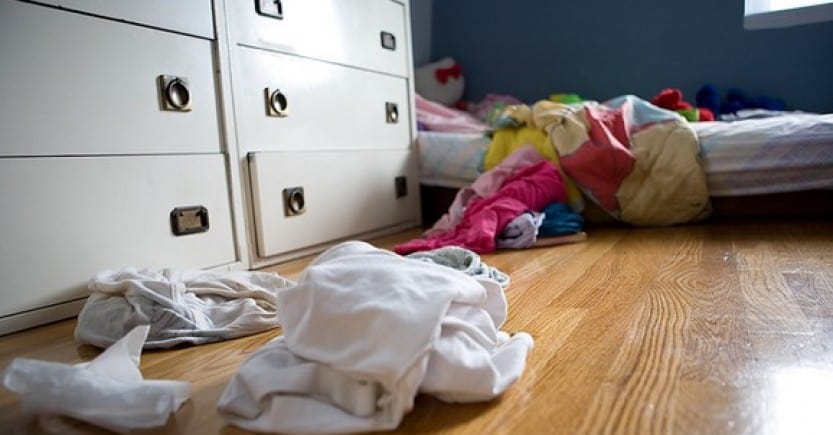6 Key Steps for Making a Safe-Haven Bedroom for your Child
Adjustments at home can make a big difference in reducing exposure to allergens and aggravating stimuli that often have an impact on behavioral and brain functioning.
From flooring to air quality and electromagnetic radiation, it’s important to cover all the bases so the room where we usually spend most of our hours is clean and healthful, giving a reprieve from environmental factors that could be harmful.
Here are six key steps to a healing bedroom environment:
1 Flooring
- Generally, avoid carpeting because it harbors allergens and bacteria. Also, new carpets and matting/backing, unless eco-friendly, can outgas toxins. However, if carpeting is “green” and vacuumed frequently, it can be fine.
- Important: If removing carpeting, vacuum well first and keep the child or sensitive adult out of the house while the carpet is being taken up. Removal can release previously trapped mold and other allergens into the air. Run an air purifier during and after removal, and open windows;
- If it is not feasible to remove carpeting, vacuum frequently with a HEPA or other quality filter or central vacuum system. Do not use commercial scented carpet “fresheners.” Use professional carpet cleaning as needed. When selecting professionals, find a company that specializes in a non-chemical, unscented, low-water process. After the cleaning, air out the room and run fans to help the carpet dry quickly;
- Use eco-friendly flooring when possible; see here for a helpful website.
2 Dust and pollen control
- Remove clutter that collects dust; simplify the number of items in the room;
- Avoid feather and down items;
- Wash linens and pillows in hot water weekly (130 degrees or above); Use a dust cover on pillows and wash it often, also.
- Keep windows closed if pollen is a problem. Open windows to air out on optimal, non-windy days;
- Use allergy-friendly protective bed coverings. There are many sources. Example here;
- Keep surfaces well dusted; use a slightly damp microfiber cloth to collect dust;
- Run a quality air purifier;
- Encase mattresses in air-tight, allergen-protective covers; If you have allergies, wear a dust mask while dusting;
- If the room has drapes or curtains, wash them regularly. It’s better to avoid these as they are more trouble to clean than blinds.
3 Reduce mold
- Keep humidity level below 50%; use a dehumidifier if needed
- Don’t have houseplants in the bedroom. (If mold is not an issue, certain houseplants can be beneficial.)
- If you discover mold, clean with a solution of water and a non-ammonia soap or detergent. Chlorine bleach (a last resort) may be needed but can be toxic. Move the child out of the bedroom when dealing with mold.
- Remove any carpeting, wallpaper or wall surface contaminated with mold. Serious mold problems require professional help.
- If you don’t have pollen allergies, open doors, and windows and use fans to clear the air on low-humidity days.
4 A no-animal zone
- Don’t let pets visit or sleep in the bedroom. If anyone has animal allergies, it is preferable that the pets be removed from the home. If kept in the home, bathe them weekly. If your child is allergic to the pet’s dander, the health damage from exposure can outweigh the emotional benefit of having the pet.
- People track dander from animals throughout the house, so keeping the bedroom clean through the steps above will help eliminate this type of dander exposure brought into the bedroom.
- Use a high-quality room or central air purifier.
5 Avoid toxins
- Use natural furniture when possible; avoid pressed wood and other materials that outgas toxins;
- Select natural bedding materials;
- If painting in the room, be sure to use “no-VOC” paints. They are readily available now, just ask at your local paint dealer. They may try to interest you in low-VOC but insist on no-VOC. Air out the room well for a few days before allowing the child back in the room.
- Do not use scented candles or commercial scented air purifiers or plug-ins!
6 Reduce electromagnetic radiation — the basic approach:
- Avoid fluorescent bulbs; use incandescent ones when available, LED bulbs, or combined halogen/incandescent low energy bulbs;
- Keep computer, TV, and video console in another room; use battery clock rather than electric;
- When possible, do not charge electrical items in the room;
- Place bed away from main electrical sources;
- Using a plug-in phone rather than a cell phone is ideal, but it’s not feasible or possible in many areas.
General note: It’s always best to remove shoes when entering the home and important to not allow shoes worn outside to be used or stored in the bedroom.









